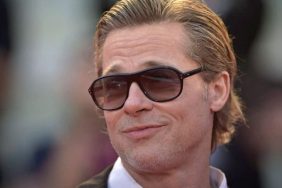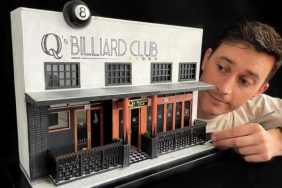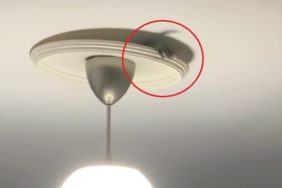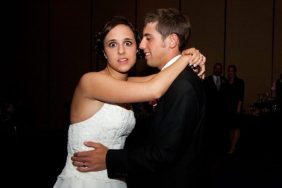Se Yoon Park has come a long way since his upbringing in his native Korea. Now Brooklyn is home for the architect-turned-artist and New York, with its bright lights and frenetic pace, has certainly had an impact on Park’s evolution as a creator. He recently unveiled his ambitious exhibition Light, Darkness and the Tree. The result is a mélange of various materials, movement and emotion that all collide wonderfully together. It’s a brilliant debut as an artist who has passed a number of years as an equally successful architect.

Se Yoon Park gets hands on in the production of his sculptures. Photo courtesy of Se Yoon Park.
CRAVE: Your career has taken an interesting trajectory, from architect to artist. In your own words, fill us in on what ultimately led you to creating sculptures? What elements translated from architecture to modern art, and where are the disconnects between the two, if any?
SE YOON PARK: When I began my own practice as an architect, I could not find my own voice as an individual. I had trouble identifying with the projects I worked on. I wanted to give meaning to my work, create meaningful work that every person could understand. As a sculptor, I have learnt to express myself in the language of light and darkness.
In architecture, light and darkness is most often explored in the interior, but I wanted to bring these qualities to the surface. I approached sculpture from my position as an architect, employing the methods I was most familiar with to the design and production process, working with 3D modelling programmes [sic] and 3D printing in tandem with sketching and writing. To me, architecture and sculpture are not so very different – both interact with their surroundings and the perceptions of people. In today’s expanded field of practice, more and more trans-disciplinary work is being done, and I am appreciative for all the experimental practitioners who paved my way.

Se Yoon Park’s Tree of Life. Photo courtesy of Se Yoon Park.
There’s a sense that Light, Darkness and the Tree is a self-portrait, or a visual autobiography. What can we glean from this project about you as an artist and architect? What personal discoveries did you arrive at during the exhibit’s ideation and creation?
Going through the rigors of manifesting my ideals in the past three years, I’ve grown to value the light and darkness in my life. I’ve grown a deep appreciation for my sculptures because they taught me the nature of light and darkness. When lost in darkness, I’m confident light will come. I can always overcome my darkness since light will shine through. I’ve grown to treasure the light knowing that darkness will come as well.
Also: “Psychobook” Reveals the Secret World of Psychology Tests
Tree of Life, Compositional Study Four is my self-portrait. It is unstable, unbalanced and seems incomplete upon first glance. There is something special about its instability and incompletion. I had originally planned on making it perfectly balanced, but, I stopped during its construction. In its incompleteness, I was able to recognize the true beauty in humanity.

Se Yoon Park’s Anxious Sculpture. Photo courtesy of Se Yoon Park.
There are some very nuanced touches and movements added to the trees. How did you communicate to your team during the casting phase that you wanted to give some sense of breadth, movement and life to these pieces? It’s certainly not the easiest thing to make clear in modern art.
As an artist, I shoulder the responsibility of ensuring that my intentions are thoroughly understood by my audience. But one can never escape the discordance between idea and impression inherent in the empirical difference of each individual.
Even within the artists in my team, all of us with a shared understanding of the project, communicating the exact image I had in my mind was still not a simple task – for they are not myself, and I am not them. The only way to accurately bring my ideas to life was through countless iterations, creating real, tangible bodies that we could all interact with and develop, closing in onto the intended form.
I applied the colors on the trees myself. Hand-dyeing the trees was an incredibly personal and introspective process, and I hope that through the presence of my hand, my audience will be able to appreciate my message.
Finally, I left it to Mother Nature to achieve that subtle sense of movement. Through the day, she casts her warm glow across the surface, creating beautiful gradations that breathe life into each piece, creating a visual reminder of time
Walk us through Light, Darkness and the Tree. What is the greater story arc to be told here? Where did it come from? How did you find this inspiration and ultimately make sense of it for a larger public to experience?
I began my foray into sculpture by searching for the most fundamental aspects of my work, and I realized that since childhood, light and darkness has always been the basic element of my work, my thinking. It is in the exploration of light and darkness that I found my roots, and I saw my life encompassed in this very dynamic.
It is also through light and darkness that I communicate with my audience, for it is the fundamental construct of human vision and perception, and filled with a metaphorical force that is almost universally felt. To me, life is defined by the passage of time, and the passage of time is the flow of light and darkness. Similar to the passing of night and day. I feel as if my work is somewhere in between living and non-living. Though the sculptures are inanimate, they feel alive.
The basic unit of my work is the complex geometrical shape, ‘Light and Darkness’. I designed the form to allow light and shadow to transition smoothly across its surface, capturing the flow of time. For ‘And Tree of Life’, I chose the form of the tree as an allegory of existence. Trees grow from roots deep in the unseeable darkness of the ground to show itself to the world as it reaches for light. As day turns into night, the tree consumes and produces, just like we do, in an eternal cycle. The tree, as a form, captures the essence of the divine order within nature.

Se Yoon Park fuses bursts of color with unique shapes. Photo courtesy of Se Yoon Park.
Korea is a vastly different environment than that of your current home, Brooklyn. What xperiences and sensibilities from life back in Korea inform this project? Are there specific instances where you look at this body of work and say to yourself “This reminds me of home?”
Growing up in Korea, I lived in the countryside. I was always in contact with nature and witnessed how nature designed with its elemental forms. The natural curves of my forms hearken back to that time in my childhood, a time of harmony and continuity. I love that I was born in the countryside because it made me who I am.
When I was a little boy in the 1980s everything changed. My backyard, which was once a forest and a stream, was cleared for construction. Good and bad, I saw so much change during this time in Korea. This is but one of the many instances of light and darkness flowing into each other that I bind within the surface of my forms.
This project certainly has opened the door to others. Have you taken on the mantle of artist completely? Or is there a learning curve that you are still adjusting to, coming from a background as an architect? What are you currently working on or prepping for the future?
I see art as being evaluated within the context of the artist who created it, while architecture requires the simultaneous evaluation of countless other variables and agents. I wish to continue refining my process, appealing ever more directly to my audience through my language of light and darkness, but my history in the architectural profession will always color my temperament.
I am currently in the midst of my first solo exhibition, Light, Darkness and the Tree, which will run until November 21 at 481 Van Brunt St, Brooklyn, NY 11231. We are also working on site-specific installations to bring my message to an ever-growing audience, while continuing to experiment with other technologies to best translate my ideas into real forms.








